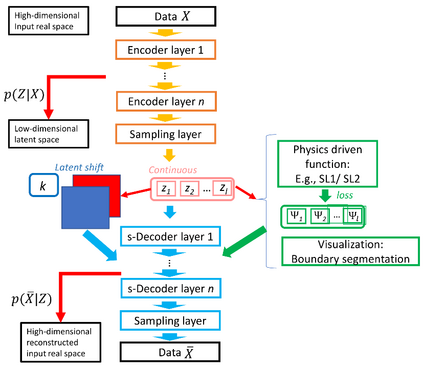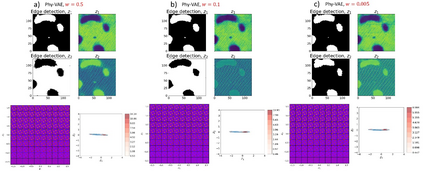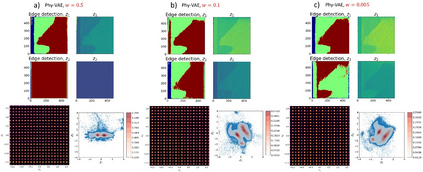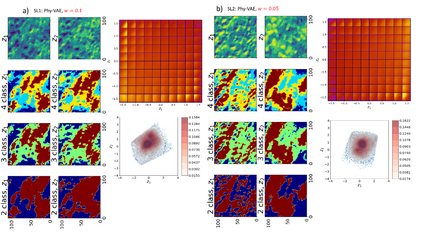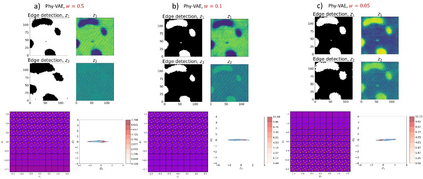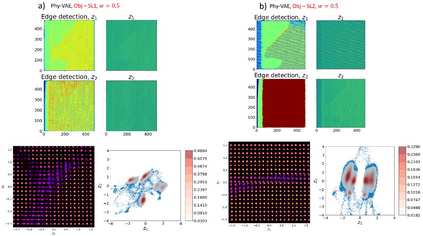Electron and scanning probe microscopy produce vast amounts of data in the form of images or hyperspectral data, such as EELS or 4D STEM, that contain information on a wide range of structural, physical, and chemical properties of materials. To extract valuable insights from these data, it is crucial to identify physically separate regions in the data, such as phases, ferroic variants, and boundaries between them. In order to derive an easily interpretable feature analysis, combining with well-defined boundaries in a principled and unsupervised manner, here we present a physics augmented machine learning method which combines the capability of Variational Autoencoders to disentangle factors of variability within the data and the physics driven loss function that seeks to minimize the total length of the discontinuities in images corresponding to latent representations. Our method is applied to various materials, including NiO-LSMO, BiFeO3, and graphene. The results demonstrate the effectiveness of our approach in extracting meaningful information from large volumes of imaging data. The fully notebook containing implementation of the code and analysis workflow is available at https://github.com/arpanbiswas52/PaperNotebooks
翻译:电子和扫描探测器显微镜以图像或超光谱数据的形式产生大量数据,如ELELS或4DSTEM等,其中包括关于材料的结构、物理和化学特性的广泛信息。为了从这些数据中获取宝贵的见解,关键是要在数据中确定物理上独立的区域,例如阶段、铁质变异物和它们之间的界限。为了进行易于解释的特征分析,同时以有原则的和不受监督的方式与明确界定的界限相结合,我们在此提出一种物理增强机学习方法,将挥发性自动编码器在数据内分解变异因素的能力和物理学驱动的损失功能结合起来,以尽量缩短与潜表相对应的图像的不连续时间。我们的方法适用于各种材料,包括NiO-LSMO、BiFO3和石墨。结果表明我们从大量成像数据中提取有意义信息的方法的有效性。载有代码和分析工作流程的完整笔记本可在https://github.com/arpanbisiwas52/Papernotolbooks查阅。

